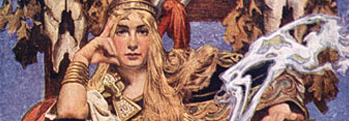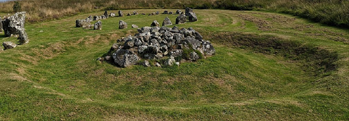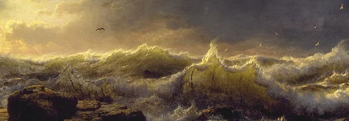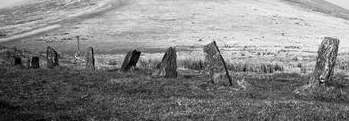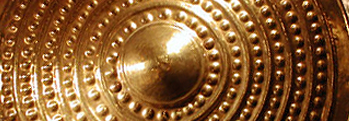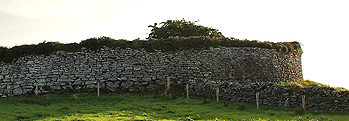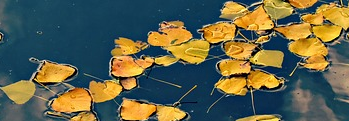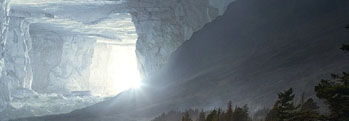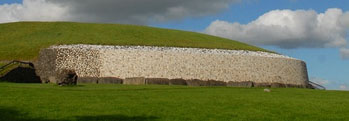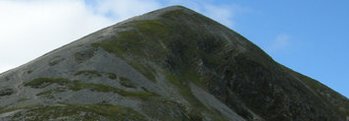The Last Kingdom in Ireland
Irish and Celtic myths and legends, Irish folklore and Irish fairy tales and Legendary Places in Ireland
Ancient home of a tyrant terror
 Once upon a time there were many kingdoms in Ireland, and many kings, or perhaps they would have been better known as chieftains, but kings they were for all that. As time went by each of these kingdoms fell and were joined one into the other, but yet a single kingdom still remains in the farthest north and farthest west of the country, and this is the kingdom of Tory Island.
Once upon a time there were many kingdoms in Ireland, and many kings, or perhaps they would have been better known as chieftains, but kings they were for all that. As time went by each of these kingdoms fell and were joined one into the other, but yet a single kingdom still remains in the farthest north and farthest west of the country, and this is the kingdom of Tory Island.
Its name means Túr Rí, “the king’s tower” in Irish, and although today it is home to only a couple of hundred people, it was once the heart of a powerful empire, terrible wars, and the scene of battles that shaped the country and the world to come!
The most ancient legends tell that the Nemedians, some of the first arrivals in Ireland, settled on Tory Island, but a fierce race of roving pirates called the Fomorians soon took it away from them! And it was here that Conand, lord of the Fomors, built his first tower in those far off times, before the knowledge of iron, bronze or even copper.
Not to take it lying down, the Nemedians soon took the island back, but a dark and evil king arose among the Fomors, and his name was Balor of the evil eye. His gaze alone could set his enemies on fire, and it was said that his fatal eye took twenty strong men to open! It was covered with seven water-soaked cloaks and as each was removed, more devastation was unleashed. Not only that but during his reign the Fomors themselves began to take on a bestial, demonic appearance, hence their name, Sea Demons.
There is a place on Tory Island today know as Dún Bhaloir, or Balor's castle, and it was from this aerie that he ruled Ireland. Looking eastwards, the impregnable fortress had sheer cliffs on three sides of it and was only accessible by a narrow and jagged causeway, with four earthen walls blocking off even that. Despite his dread sorcerous might however, one of his seers prophecised his doom – his lovely daughter Ethniu would have a son, and that son would some day slay him!
Eager as he was to avert that fate, he chained up his daughter on the highest point of the island, a place called Túr Mór in Old Irish, meaning The High Tower, which was made of crystal. After she got married and became pregnant he left strict orders that the child was to be cast from the top into the jagged rocks and hungry waters of the icy Atlantic far below the instant it was born.
But instead of one, there were three born, so he bound them up in a cloth and pinned it closed with a thorn, throwing them into the sea. Loch Deilg, Lake Thorn, on the east end of Tory is named after this infamous act. But one survived, saved by Birog the Druidess, and his name was Lugh of fable and legend.
One day Balor was visiting the blacksmith Gaibhadin, Lugh's uncle, and bold as he was he boasted of killing Cian, Lugh's father. Incensed and not knowing Balor was his own grandfather, Lugh pulled forth a red hot iron brand from the forge and stabbed it through the back of Balor's head and out from his evil eye, killing him stone dead! And Balor's blood turned the hills red.
After Balor's death the Fomorians ceased their piratical depredations and went back into the deep abysses of the ocean again, but still the islanders look upon dark clouds when storms threaten, and take their children indoors with a shiver, in case the Fomors might once again return!
The ancient neolithic dolmens which still dot the island are said to be the last remnants of their reign in all the land, except only for the jagged stone teeth called Balor's soldiers, or Saighdiúirí Bhaloir.
For such a small place, being only three miles long and half a mile wide, bare of trees and most vegetation, Tory island has had a turbulent history between that time and this. More pirates arrived with the Milesians and their raiding of the island and coastline about was only stopped by the arrival of Saint Colmcille, who told the islanders that if they would only convert to Christianity, he would ask God to run the pirates off. And so they did, and the pirates were duly washed away in a terrible storm. So bad were they that the name “Tory” became synonymous with piracy.
He built a church there in the sixth century and it stood for a thousand years before events on the main island of Ireland spilled over once again. At the start of the seventeenth century the Gaelic chieftains of Donegal fled to Tory island, but they were pursued by the armies of Queen Elizabeth, who destroyed them and the monastery, which had protected the islanders from Vikings and pirates for centuries, along with them.
Fifty years later the Cromwellians arrived, and the true persecution began, as farmers who had owned their land for generations were now forced to pay rent! The island played its part in rebellions and uprisings against the English down through the years, and its people have weathered many fierce storms, some cutting them off from the mainland entirely.
One of the last straws for the English before they were driven out of Ireland was the fate of the gunship, the HMS Wasp, which was sent to evict islanders who had refused or were unable to pay the steep rents demanded by the latest tyrants at the end of the nineteenth century.
Stories tell of an ill-favoured man called Heggarty who used the cursing or wishing stones to drag the mighty vessel onto the rocks, and so he did, with all of the bailiffs, taxmen and sailors on board, sinking it forever.
Today this small island welcomes visitors when it can, and are happy to share their unique culture and crafts, their songs and storytelling with tourists. They elect a king who, although he has no real power, is part of their time-honoured traditions, and who helps officiate at various festivals and ceremonies. It is an island of artists and creative people who spread the rich local culture wherever they travel, telling of the curative potency of blessed Tory clay and the curse of the red-haired woman on the fishermen of the island.
Tory Island is marked on the map below.
Legendary Places in Ireland
The extraordinary Ballintubber Abbey, known as Tobar Padraic in the Annals of the Four Mastersm is almost a thousand years old, having been built by King Cathal Crobdearg Ua Conchobair - whose father commissioned the beautiful Cross of Cong - in 1216. It has survived ages and centuries of persecution and fire, providing a place for people to visit ... [more]
One of the rarest and most beautiful woods in the world is Irish bog oak. This very ancient kind of wood can be found across Ireland, but is most often recovered from deep peat bogs in the midlands, and can be anywhere from three thousand to eight thousand years old or more. These trees grew, lived and fell in times of legend, witnessing the rise o ... [more]
One of the most imposing legacies of the last of the mighty megalith-builders of the Neolithic and Bronze ages, the Dolmen of the Four Maols, considered by some to be a cist tomb rather than a dolmen or portal tomb. An enormous capstone sits above three other stones, while the entry stone lies not far off. It was once covered by a cairn of smaller ... [more]
Alone in County Louth rises a tall standing stone, its only company the ravens overhead and the whispering wind given voice by nearby trees. This is Clochafarmore, which means "the stone of the great man". It was first raised during the bronze age and rises to ove three meters in height, in a place whose name means The Field of Slaughter, ... [more]
The Boheh stone in the deepest west of Ireland is one of the finest examples of Neolithic rock art in Europe, over two hundred and fifty petroglyphs wrought by unknown hands on a natural outcrop of rock flecked with quartz stones, on the west side of a hill, facing the setting sun, around 3800 BC. Twice a year at sowing and harvest times this produ ... [more]
Cashel of the Kings, the mighty Rock of Cashel was in olden times known as the Royal Site of the Kings of Mumu, a place we today call Munster. It is a great uplifting of raw limestone from the surrounding grassy plains, which old tales tell was hurled from a mountain called the Devil's Bit, in County Tipperary. It is said to have been where ... [more]
The great northern fastness of Emain Macha means "Macha's twins" or "Macha's pair", and its tale is bound tightly with the local goddess Macha, after whom is also named Armagh, Ard Macha. The ancient Greek philosopher Ptolemy drew a map of the world, upon which he marked a place called Isamnion in southern Ulster, which ... [more]
The spiritual and geographical heart of Ireland is the Hill of Uisneach overlooking a wide plain in view of twenty counties, where the borders of all five kingdoms met, where great decisions were made and assemblies were held, the mórdáil Uisnig, and home to Ail na Mireann, or the Stone of Divisions. On the hill all around this strang ... [more]
The seat of the High Kings of Ireland stretching back to the Tuatha and the Fir Bolg, Tara or Temair as it was known then, is said to have been the seat of a hundred and forty two kings, kingships won by battle, contest and merit, not passed down father to son as in more primitive cultures. It is also known as Teamhair na Rí, 'Tar ... [more]
Dún Ailinne is one of the great Royal Sites of Ireland, "a place of assemblies, a Rath with royal roads, a Grianan or palace, and a Royal Dún", where great ceremonies, rituals and gatherings took place, seat and crowning-place of the Gaelic Kings of Leinster. All that remains of it now is a large circular embankment a ... [more]
The glorious stronghold of Rathcrogan, or Ráth Cruachan, was the Royal Site of the great Kings and Queens of the Western lands for thousands of years. Within its sacred embrace were held the thronging ceremonial assemblies or óenach, and people of every station would gather from all corners of Ireland to reach out and touch, if on ... [more]
The gift of the gab, as it’s known, is a common thing among the Irish – being able to talk all day about anything and everything, and do it in a way that would have you listen as well. It’s as Irish as red hair and freckles. But what if you didn’t have the gift of the gab, or felt a deficiency of gabbiness? Never fear, al ... [more]
The Spring equinox was a very important time for the people of ancient Ireland, heralding as it did the end of the dark season with all of its dangers and want, and signalling the dawn of a new year of plenty. The day and night, the light and the dark side of the year were in equal balance, neither stronger than the other, and it is easy to ... [more]
Ireland is a land of many treasures – some are well known while others are known only to a few, like the mysterious stone circles of Beaghmore! In the north of County Tyrone they can be found, at the edge of the Sperrin mountains looking out over the wide countryside below, dating back to the bronze age and earlier, to the time when the Tuath ... [more]
The royal ringfort of Grianán Ailigh was known as the father of every building in Ireland by the Annals of the Four Masters, who also claimed it was first built in the year 1500 BC, in the time of the Tuatha Dé Danann! A mighty place of strength it is and was and may always be, one of the few locations in Ireland correctly marked on a ... [more]
Knockma of the mists is a place wreathed in secrets and myth where they say sleeps the greatest king of the Sidhe, he whose name was Finnbheara! Should you go for a walk around Knockma Hill, pay close attention to that which you cannot see – a warm breeze meant a good fairy was passing by, and a sudden shiver meant an evil one was close! J ... [more]
Nine is a mystical number in Irish folklore, being thrice three, itself known from ancient times as a mysterious symbol, and so should you happen across nine stones, you would do well to be extra careful! For who knows what might lie sleeping just below the surface. And such a place can be found on the saddle between Sliabh Bán, the White ... [more]
Once upon a time there were many kingdoms in Ireland, and many kings, or perhaps they would have been better known as chieftains, but kings they were for all that. As time went by each of these kingdoms fell and were joined one into the other, but yet a single kingdom still remains in the farthest north and farthest west of the country, and this is ... [more]
Ireland's bones are made of stories, you can hardly step over a rock or walk past an old mound but if it could speak, it would tell you tales you could hardly imagine. But of all the legended glens and fields misty with memory in this ancient nation, there are few with as many secrets hidden in their depths as Lough Gur in county Limerick. S ... [more]
There are tens of thousands of round stone forts in Ireland, some say as many as fifty thousand, if you can believe it, and one of the finest examples we have is at Kilcashel in County Mayo, which comes from the Irish Coill an Chaisil, the woods of the stone fort. Almost perfectly circular in construction, with thick walls two broad men could walk ... [more]
Scattered throughout the Irish countryside are hundreds if not thousands of holy wells, almost all of great antiquity, even predating Christianity. They can take almost any form and show up in any place, shimmering in the shadow of engraved stone monuments, in lapping sea caves where the fresh and salt waters mingle twice a day, as natural springs ... [more]
In county Roscommon there's a place of great antiquity called Oweynagat, which some have mistakenly thought to mean the Cave of Cats, although it has nothing to do with cats - “cath” being the Irish word for “battle” and so it should rightfully be called the battle cave. Indeed it has a long association with the Morrigan ... [more]
The Burren is one of the wonders of Ireland. A rolling rocky landscape of limestone hills and plains, it is marked with history stretching back thousands of years. Nestled in between the limestone slabs are herbs and plants you'd be hard pressed to find elsewhere, hailing from places as far afield as the Arctic and the Mediterranean, kept warm ... [more]
Older than Stonehenge and the great pyramids of Giza stands Newgrange, the heart of legends and mysteries stretching back five thousand years. Situated along the river Boyne near to numerous other such places like Knowth and Dowth, that very same river where Fionn Mac Cumhaill was said to have first found and tasted the salmon of knowledge, and the ... [more]
Dún Aonghasa means "the Fort of Aonghasa", and remains one of the most impressive ancient monuments in Ireland, Europe or the world. Perched on the edge of a high and jagged cliff with the grey-green waters of the Atlantic battering below, it gained its name from its original builders, who were called the Fir Bolg, some of the ... [more]
Croagh Patrick or Patrick's Stack is an important place of pilgrimage for Christians throughout Ireland and the world today, some even walking the ascent in their bare feet as penance for their sins. However it was considered a holy place long before St Patrick came to visit, even though it is said he banished the snakes from Ireland while stan ... [more]
Rising from the ocean a short distance off the coast of county Kerry in southern Ireland, Skellig Michael and its smaller brother rear up out of the Atlantic ocean like jagged grey teeth. Famous poet George Bernard Shaw who visited the place in 1910, called it an "incredible, impossible, mad place" and "part of our dream world". ... [more]














